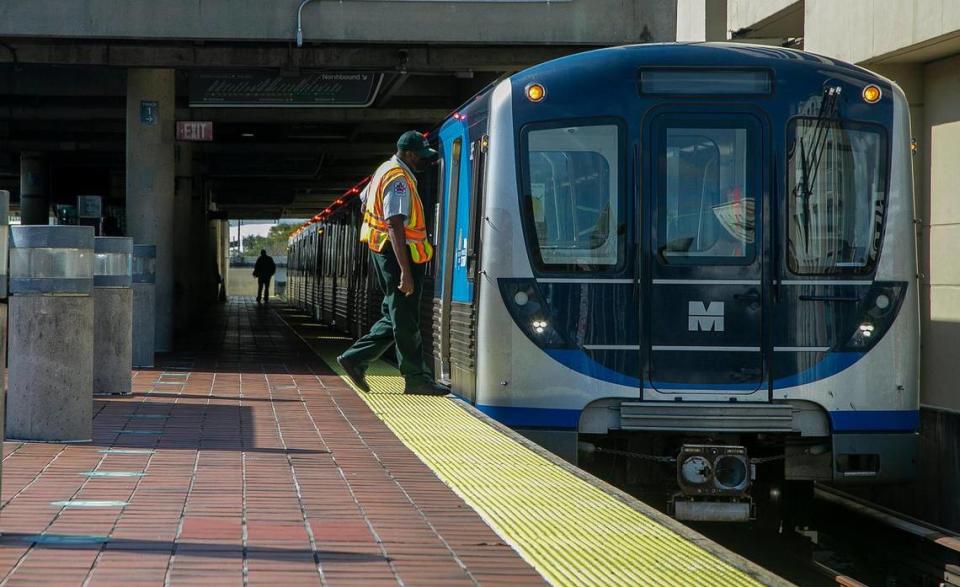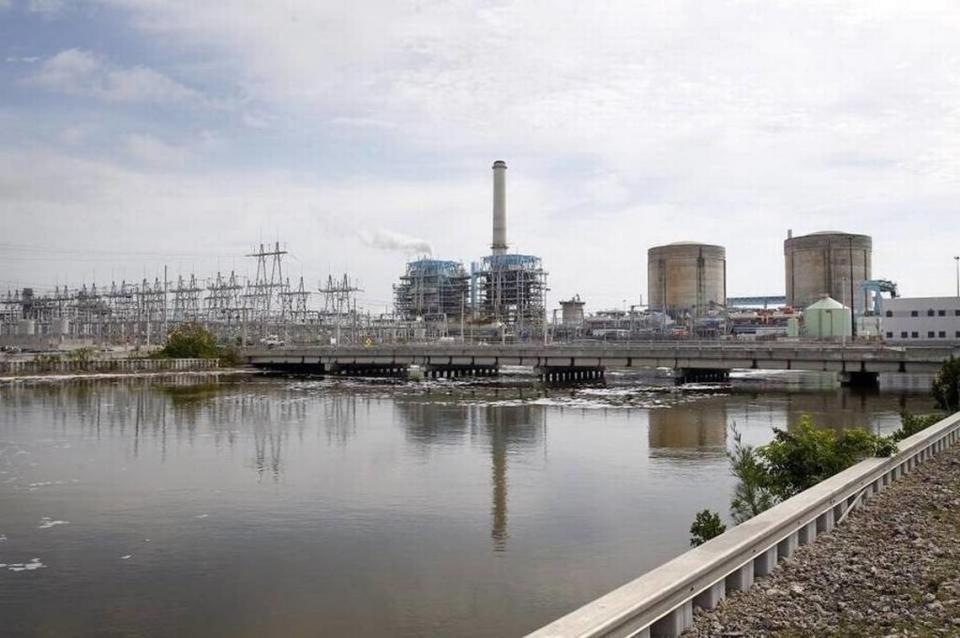On Earth Day, a flurry of plans to slash carbon emissions in Miami-Dade and Miami
- Oops!Something went wrong.Please try again later.
On Earth Day, the greater Miami area shared the same message as President Joe Biden: a pledge to slash greenhouse gas emissions dramatically in the coming decades.
With Miami Beach joining the crowd, South Florida’s big governments have committed to going carbon neutral by 2050, which means no more carbon dioxide released into the atmosphere. Currently, the region is on track to see more than a foot of sea level rise at that point.
Miami-Dade Mayor Daniella Levine Cava called the county’s newly released Miami-Dade Climate Action Strategy “very ambitious” in a virtual press conference on Thursday.
“We’re at a pivotal moment for avoiding devastating climate impacts,” she said. “These goals will require our steadfast commitment; this is not easy. We need to move past business as usual.”

Later that afternoon, Miami Mayor Frances Suarez announced his city’s Miami Forever Carbon Neutral plan at a press conference outside city hall, where he said the strategy will help make Miami the “most sustainable and resilient city in the world.”
“We’re making an unequivocal promise,” he said. “This is one of the most comprehensive series of climate and environmental policies and initiatives ever seen in Florida.”
Miami-Dade says it will cut its emissions in half by 2030 and Miami plans to reduce its emissions 60% by 2035. Miami-Dade County Public Schools also committed to 100% clean energy by 2030 in a Wednesday school board meeting.
‘For our children’s sake’: Miami Dade schools commit to 100% clean energy by 2030
Miami Beach offered no specifics on how it’s going to get to neutrality in its Thursday announcement, and Miami and Miami-Dade’s plans are still in the draft stages, but they generally contain some broad themes.
First, electrify everything. That includes government-owned cars, buses and trolleys (with exceptions for emergency vehicles), as well as encouraging residents to switch to electric cars.
Both greenhouse gas plans mention more public transit and making communities safer for biking, as transportation makes up the largest slice of emissions for most places. They also focus heavily on energy efficiency, both at the commercial scale, like the county’s BE305 program that Miami is in the process of implementing, and in individual homes, like the city’s plans to start a grant program to help homeowners upgrade to more energy-efficient doors, windows and air conditioners.

Things get complicated when it comes to natural gas, a fossil fuel used for heating and cooking.
Miami’s early presentations of its plan to cut down on emissions mention policies like blocking the use of natural gas in new construction, potentially as early as 2022. But after city officials met with representatives from natural gas companies, the draft released Thursday now also suggests the policies could make exceptions for “renewable natural gas.” The term references natural gas collected from organic sources like landfills or sewage treatment plants, where it’s produced as a byproduct of rotting waste and is usually released into the atmosphere where it contributes to global warming. Capturing it and burning it for energy releases carbon dioxide.
Miami-Dade’s plan says it wants to ramp up the energy it already produces from this technique at its wastewater treatment plants, as well as burning 50% of its non-recycled garbage by 2050 and converting it to energy.
The county’s plan doesn’t reference natural gas bans, which have been attacked by utility lobbyists across the country, including in Tallahassee. A natural gas industry-written bill to pre-empt local governments from limiting the use of natural gas has soared through the house and senate.
Another bill sailing through the Legislature would block local governments from doing much of what they’re suggesting in these plans, including any commitments to clean energy.
Miami Mayor Frances Suarez, after praising commitments from Gov. Ron DeSantis and the Legislature to funding much-needed resiliency infrastructure in Miami, acknowledged that the bills would be stifling if passed.
“That bill is not something that advances what we want to do,” he said.

Miami has also determined that reaching its reduction goals means the city needs to rely on 100% carbon-free energy by 2035, five years later than the school board committed to Wednesday. Miami-Dade did not make any such commitment.
That could be a difficult goal to achieve, since the primary energy provider for Miami-Dade County, Florida Power & Light, hasn’t publicly committed to 100% renewable energy at any point. The utility says it has phased out coal, the dirtiest fossil fuel, entirely in the state as of January 1. Other than its two nuclear power plants — Miami Dade’s Turkey Point and the St. Lucie facility — FP&L produces most of its energy through natural gas, a fossil fuel.
“Florida Power & Light is actively working with Miami-Dade County and the city of Miami, along with many other communities we serve, to make tangible progress on their emission reduction goals,” said spokesman Bill Orlove. “We are always looking at new technologies and how we can continue to generate and deliver energy that is even cleaner for our customers now and for future generations.”
It’s pledged to install more solar in a “30 million solar panels by 2030” commitment, and its “SolarTogether” program allows municipalities like Miami-Dade to buy credits for solar energy produced at facilities outside the county. Orlove said Miami-Dade currently gets 20% of its energy from the solar plants associated with this program, a $1.8 billion investment for FPL.
But FPL only projects reaching about 40% clean energy by 2030.
That could leave counties and cities to try and make up the difference themselves, perhaps largely with more solar on public buildings, which both Miami-Dade and Miami have said they’re interested in.
It could also rely on the federal government, and Biden’s executive order calling for 100% carbon-free energy by 2035 and his announcement Thursday that the U.S. will slash emissions by up to 52% by 2030.
Miami and Miami-Dade say they will start to hold community meetings to gather feedback on the plans soon.
“It won’t be final until we hear from all corners of our county and incorporate that,” said Sean McCrackine, the Miami-Dade mayor’s chief of policy and planning.
To submit comment on the Miami Forever Carbon Neutral plan: fill out this form.
To submit comment on Miami-Dade Climate Action Strategy: email resilience@miamidade.gov.
Both governments have plans to hold public meetings but haven’t released details yet. This story will update when those are available.

